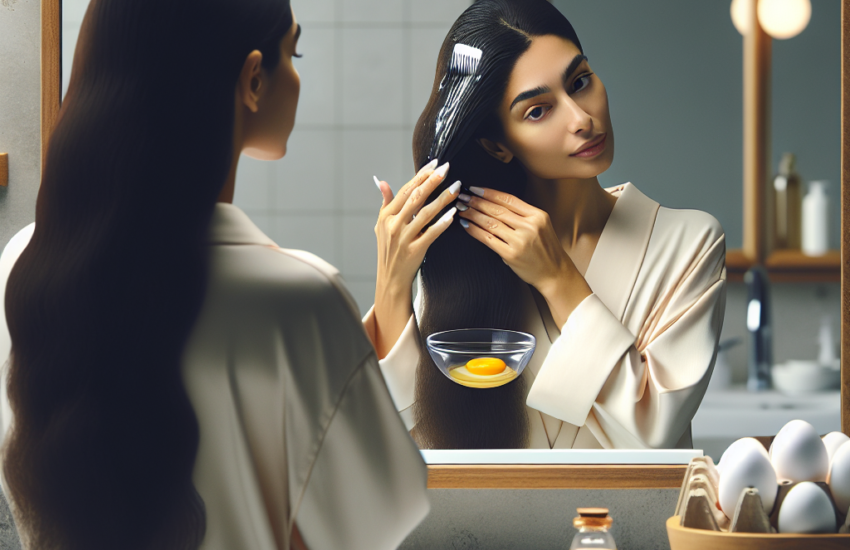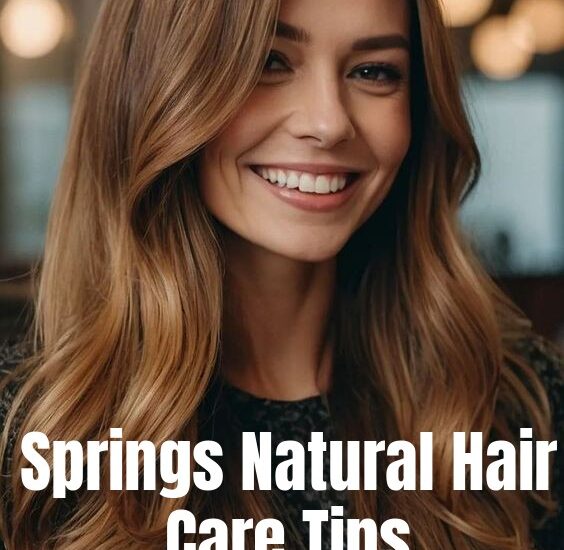How To Maintain Curly Hair
To maintain curly hair, use moisturizing products and avoid excessive heat styling. Regular trims and deep conditioning treatments are essential.
Curly hair requires special care to stay healthy and defined. Moisture is crucial, so choose hydrating shampoos and conditioners specifically for curly hair. Avoid using heat styling tools frequently, as they can damage the hair and cause frizz. Regular trims help to prevent split ends and maintain the shape of your curls.
Deep conditioning treatments once a week can provide the necessary moisture and nutrients. Using a wide-tooth comb or your fingers to detangle wet hair can minimize breakage. Adopting a consistent hair care routine tailored to your curly hair’s needs will keep your curls looking their best. 
The Basics of Maintaining Curly Hair
Curly hair can be both stunning and challenging to maintain. Understanding the basics of curly hair is crucial for keeping it healthy and beautiful. This guide will help you grasp the fundamentals, starting with hair types and curl patterns.
Hair Types
Curly hair falls into different types, each with unique characteristics. Knowing your hair type helps in choosing the right products and techniques. Here’s a breakdown of common hair types:
- Type 2: Wavy Hair
- 2A: Fine, thin, and easy to straighten.
- 2B: Wavy, slightly frizzy, and harder to straighten.
- 2C: Thick, wavy, and prone to frizz.
- Type 3: Curly Hair
- 3A: Large, loose curls.
- 3B: Bouncy, ringlet-type curls.
- 3C: Tight, corkscrew curls.
- Type 4: Coily Hair
- 4A: Soft, tight coils.
- 4B: Z-shaped, springy curls.
- 4C: Very tight, dense coils.
Each hair type requires specific care and products. For example, Type 2A hair needs lightweight products to avoid weighing it down, while Type 3C hair benefits from heavy creams and oils to lock in moisture.
Curl Patterns
Understanding your curl pattern is essential for maintaining curly hair. Curl patterns range from loose waves to tight coils. Here are the most common curl patterns:
- Loose Waves: Soft, gentle waves that add volume but can easily become frizzy.
- Defined Curls: Spirals that need moisture and gentle handling to prevent breakage.
- Tight Coils: Dense, springy curls that require heavy moisturizers and detangling products.
Here is a table summarizing the different curl patterns:
| Curl Pattern | Description | Care Tips |
|---|---|---|
| Loose Waves | Soft, gentle waves | Use lightweight products to avoid frizz. |
| Defined Curls | Spirals, need moisture | Use gentle handling and moisturizers. |
| Tight Coils | Dense, springy curls | Use heavy moisturizers and detangling products. |
Recognizing your curl pattern helps in choosing the right care routine. Loose waves might need more frizz control, while tight coils require deep conditioning.
Daily Care Tips
Curly hair requires special care to maintain its bounce and shine. Following a daily routine can keep your curls looking their best. Here are some essential daily care tips to help you manage and nourish your curly hair. 
Cleansing Routine
Keeping curly hair clean is crucial for healthy curls. Curly hair tends to be drier because natural oils from the scalp have a harder time traveling down the hair shaft. Follow these steps for an effective cleansing routine:
- Use a sulfate-free shampoo: Sulfates strip natural oils, making curls frizzy. Opt for gentle, sulfate-free shampoos.
- Wash your hair 2-3 times a week: Overwashing can dry out curls. Stick to washing 2-3 times weekly.
- Pre-shampoo treatment: Apply a conditioner or oil before shampooing to protect your hair from stripping.
Consider the following table for a quick overview:
| Step | Action |
|---|---|
| 1 | Use sulfate-free shampoo |
| 2 | Wash 2-3 times a week |
| 3 | Pre-shampoo treatment |
Avoid hot water as it can dry out your scalp and hair. Use lukewarm or cool water for rinsing. Also, gently massage your scalp while washing to stimulate blood flow and promote healthy hair growth.
Moisturizing Techniques
Curly hair needs moisture to stay soft and manageable. Here are some effective moisturizing techniques:
- Deep condition weekly: Use a deep conditioner once a week to keep your curls hydrated.
- Leave-in conditioner: Apply a leave-in conditioner daily to retain moisture and reduce frizz.
- Seal with oil: After applying conditioner, use a light oil like argan or jojoba to lock in moisture.
For a quick comparison, see the table below:
| Technique | Frequency |
|---|---|
| Deep condition | Weekly |
| Leave-in conditioner | Daily |
| Seal with oil | Daily |
Avoid heat styling tools as they can strip moisture from your curls. Air dry your hair or use a diffuser on a low heat setting. Also, use a silk or satin pillowcase to prevent friction and retain moisture while you sleep.
Styling Techniques
Maintaining curly hair can be both a joy and a challenge. The right styling techniques can make all the difference in keeping your curls bouncy, defined, and frizz-free. In this section, we’ll explore the best products and application methods to help you achieve gorgeous curls every day. 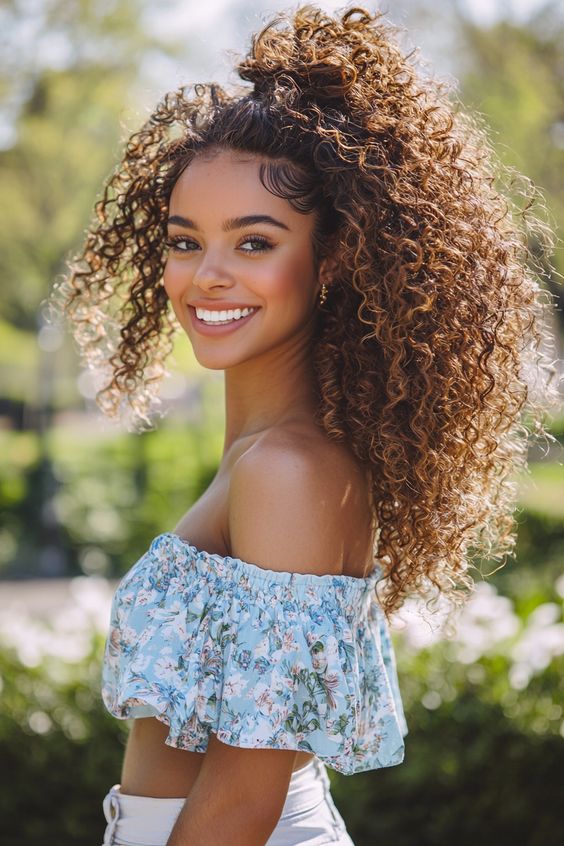
Best Products
Choosing the right products is crucial for curly hair. The best products will hydrate, define, and protect your curls. Here are some top recommendations:
- Sulfate-Free Shampoo: Sulfates can strip natural oils, leaving curls dry and frizzy. Opt for gentle cleansers.
- Moisturizing Conditioner: Look for conditioners with ingredients like shea butter, coconut oil, and aloe vera to keep your curls hydrated.
- Leave-In Conditioner: A good leave-in conditioner provides continuous moisture and helps detangle curls.
- Curl Creams and Gels: These products define and hold your curls in place. Choose formulas that enhance curl pattern without making hair crunchy.
- Heat Protectant Spray: If you use heat styling tools, always apply a heat protectant to prevent damage.
Here is a table summarizing some of the best products for curly hair:
| Product Type | Recommended Brands |
|---|---|
| Sulfate-Free Shampoo | DevaCurl, SheaMoisture |
| Moisturizing Conditioner | Ouidad, Cantu |
| Leave-In Conditioner | As I Am, Kinky-Curly |
| Curl Creams and Gels | Maui Moisture, Bounce Curl |
| Heat Protectant Spray | TRESemmé, CHI |
Application Methods
Using the right application methods can enhance the effectiveness of your products and help you achieve your desired curl pattern. Here are some tips:
- Sectioning: Divide your hair into sections. This ensures even application of products.
- Raking Method: Apply product to each section by running your fingers through your hair. This helps distribute the product evenly.
- Scrunching: After applying the product, scrunch your hair from the ends to the roots. This encourages curl formation.
- Plopping: Use a microfiber towel or a T-shirt to wrap your hair. This helps absorb excess water without causing frizz.
- Diffusing: Use a diffuser attachment on your blow dryer. This enhances curl definition and reduces frizz.
Here’s a quick guide to the application methods:
| Method | Benefits |
|---|---|
| Sectioning | Ensures even product distribution |
| Raking | Helps with detangling and product distribution |
| Scrunching | Encourages natural curl pattern |
| Plopping | Reduces frizz and enhances curl shape |
| Diffusing | Enhances curl definition and reduces drying time |
By using these products and methods, you can maintain beautiful, healthy curls every day.
Common Mistakes
Maintaining curly hair can be challenging, and many make common mistakes without realizing it. These mistakes can damage your curls and make them difficult to manage. Understanding these mistakes can help you keep your curly hair healthy and beautiful. 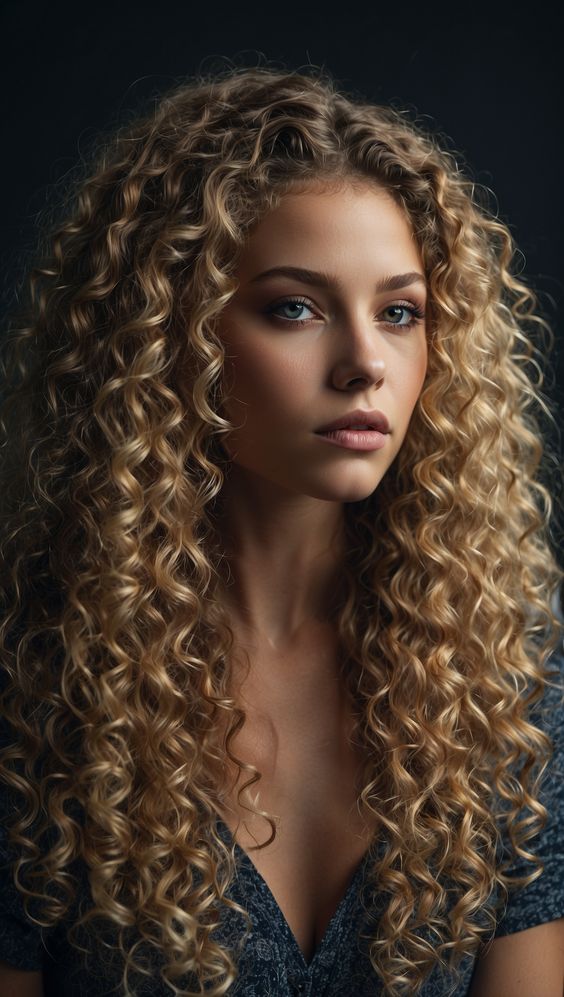
Overwashing
Overwashing is a common mistake. Curly hair tends to be drier than other hair types. Washing too often can strip the hair of its natural oils. This leads to frizz and dryness.
Here are some tips to avoid overwashing:
- Wash your hair only 1-2 times a week. This keeps natural oils intact.
- Use a sulfate-free shampoo. Sulfates can be harsh on curly hair.
- Condition regularly. Use a deep conditioner to keep your curls hydrated.
Overwashing can also lead to scalp issues. A dry scalp can cause itching and flaking. To avoid this, try co-washing (washing with conditioner only) once in a while.
| Frequency | Effect |
|---|---|
| Daily | Strips natural oils, causes dryness |
| 1-2 times a week | Keeps hair hydrated and healthy |
Heat Damage
Heat damage is another common mistake. Using hot tools like blow dryers and flat irons can damage curly hair. The high heat can break down the hair’s protein structure.
To prevent heat damage, follow these tips:
- Use heat tools sparingly. Limit to once a week or less.
- Apply a heat protectant before using hot tools. This adds a protective barrier.
- Opt for air drying whenever possible. It’s the gentlest method.
Heat damage can cause split ends and breakage. Your curls may lose their bounce and definition. It’s important to use the right temperature settings:
| Tool | Recommended Temperature |
|---|---|
| Blow Dryer | Medium heat |
| Flat Iron | 300-350°F (150-175°C) |
Avoid high heat settings. They are too harsh for curly hair. Always keep your tools on the lowest effective heat setting.
Seasonal Care
Curly hair needs special care throughout the year. Seasonal changes can affect your curls in different ways. Understanding how to care for your curly hair during summer and winter will help maintain its health and beauty. Let’s explore the best practices for seasonal care.
Summer Challenges
Summer can be tough on curly hair. The heat, humidity, and sun exposure can cause several problems. Here are some common challenges:
- Frizz: High humidity levels make curly hair frizzy.
- Dryness: Sun exposure can dry out your curls.
- Damage: Chlorine from swimming pools can damage curly hair.
To protect your curls during summer, follow these tips:
- Use a leave-in conditioner to keep your hair hydrated.
- Apply a heat protectant spray before going out in the sun.
- Rinse your hair with fresh water before swimming to reduce chlorine absorption.
- Wear a hat or scarf to protect your hair from the sun.
Here’s a simple table to summarize the summer care tips:
| Challenge | Solution |
|---|---|
| Frizz | Use leave-in conditioner |
| Dryness | Apply heat protectant spray |
| Damage from Chlorine | Rinse hair before swimming |
| Sun Exposure | Wear a hat or scarf |
Winter Solutions
Winter can be equally challenging for curly hair. Cold air, indoor heating, and lack of humidity can lead to several issues: 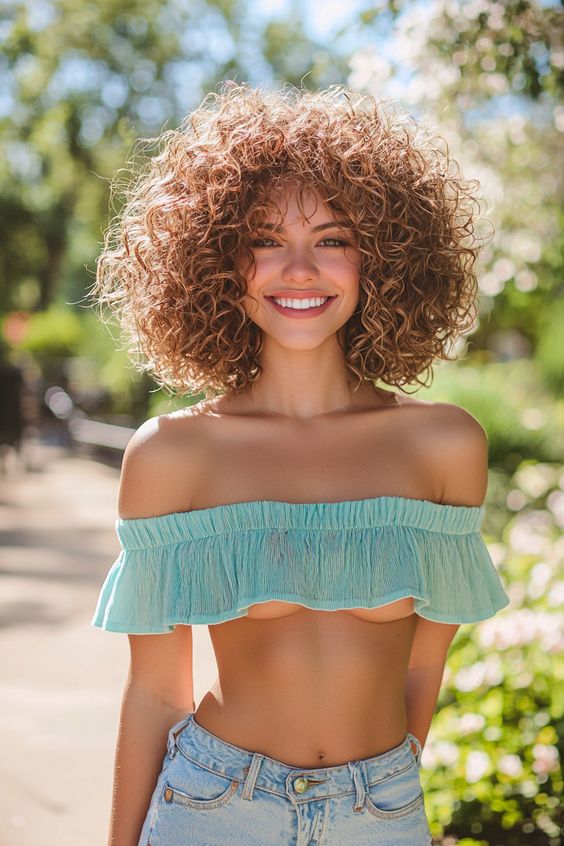
- Dryness: Cold air and indoor heating dry out curly hair.
- Static: Lack of moisture causes static in your curls.
- Breakage: Dry hair is more prone to breakage.
To keep your curls healthy during winter, try these solutions:
- Use a deep conditioning treatment weekly to maintain moisture.
- Apply a leave-in conditioner to reduce static.
- Switch to a satin or silk pillowcase to prevent breakage.
- Limit the use of heat styling tools to avoid further drying.
Here’s a simple table to summarize the winter care tips:
| Challenge | Solution |
|---|---|
| Dryness | Deep conditioning treatment |
| Static | Use leave-in conditioner |
| Breakage | Switch to satin/silk pillowcase |
| Heat Damage | Limit heat styling |
Protective Styles
Curly hair requires special care to maintain its health and beauty. Protective styles are a great way to keep curls safe from damage. These styles help in retaining moisture, reducing breakage, and promoting hair growth. Let’s explore two popular protective styles: Braids and Buns. 
Braids
Braids are a fantastic protective style for curly hair. They help in keeping the hair neat and tangle-free. Braids can last for weeks with proper care, making them a low-maintenance option.
Benefits of Braids:
- Reduces breakage by minimizing daily manipulation.
- Helps in moisture retention, preventing dryness.
- Promotes hair growth by reducing friction.
Types of Braids:
- Box Braids: These are individual plaits that are usually divided by small squared-off parts.
- Cornrows: Hair is braided very close to the scalp, using an underhand, upward motion to create a continuous, raised row.
- French Braids: Start at the crown and gradually add more hair to each section as you braid down.
To keep braids looking fresh:
- Keep your scalp clean with a gentle cleanser.
- Moisturize your scalp and braids regularly.
- Sleep with a satin or silk scarf to reduce frizz.
| Type of Braid | Duration | Maintenance |
|---|---|---|
| Box Braids | Up to 8 weeks | Medium |
| Cornrows | Up to 4 weeks | Low |
| French Braids | 1-2 weeks | Low |
Buns
Buns are another excellent protective style for curly hair. They are quick to create and versatile for different occasions. A well-done bun can protect the ends of your hair from damage.
Benefits of Buns:
- Protects hair ends from environmental damage.
- Keeps hair tangle-free and manageable.
- Great for both casual and formal settings.
Types of Buns:
- High Bun: Gathers hair at the top of the head for a sleek look.
- Low Bun: Sits at the nape of the neck, perfect for a more relaxed style.
- Messy Bun: An effortless look that still protects your hair.
To maintain a bun:
- Use a soft hair tie to avoid breakage.
- Moisturize hair before styling to keep it healthy.
- Wrap hair in a satin scarf at night to maintain the style.
| Type of Bun | Duration | Maintenance |
|---|---|---|
| High Bun | 1-2 days | Low |
| Low Bun | 1-2 days | Low |
| Messy Bun | 1 day | Low |
Hair Health
Curly hair can be both beautiful and challenging to maintain. Keeping curly hair healthy is essential for its longevity and appearance. Hair health is influenced by many factors, including your diet and hydration levels. Let’s explore how nutrition and hydration play a crucial role in maintaining curly hair. 
Nutrition
What you eat directly affects your hair’s health. A balanced diet ensures your curls stay bouncy and strong. Here are some key nutrients to focus on:
- Protein: Hair is made of keratin, a type of protein. Eating foods rich in protein like eggs, fish, and beans helps strengthen your hair.
- Vitamins: Vitamins A, C, and E are crucial for hair health. They promote hair growth and prevent hair loss. Include fruits like oranges and berries, and vegetables like spinach in your diet.
- Omega-3 Fatty Acids: These fatty acids keep your hair shiny and prevent dryness. You can find them in foods like salmon, walnuts, and flaxseeds.
- Iron: Iron deficiency can lead to hair loss. Foods like red meat, lentils, and spinach are rich in iron.
Below is a table summarizing the key nutrients and their sources:
| Key Nutrients | Food Sources |
|---|---|
| Protein | Eggs, Fish, Beans |
| Vitamins A, C, E | Oranges, Berries, Spinach |
| Omega-3 Fatty Acids | Salmon, Walnuts, Flaxseeds |
| Iron | Red Meat, Lentils, Spinach |
Hydration
Hydration is vital for maintaining curly hair. Curly hair tends to be drier than straight hair. Proper hydration helps keep your curls defined and frizz-free.
Also Read: Easy Wedding Hairstyles With Flowers: Stunning Bridal Looks
Here are some tips to ensure your hair stays hydrated:
- Drink Plenty of Water: Aim for at least 8 glasses of water a day. Water hydrates your body and scalp, promoting healthy hair.
- Use Hydrating Hair Products: Look for shampoos and conditioners designed for curly hair. These products often contain moisturizing ingredients like shea butter and coconut oil.
- Avoid Heat Styling: Heat can strip your hair of its natural moisture. Try to let your hair air dry and use heat styling tools sparingly.
- Deep Conditioning Treatments: Use a deep conditioner once a week. This helps to restore moisture and keep your curls soft.
Maintaining moisture is key for curly hair health. Remember to hydrate from the inside out and choose products that nourish your curls.
Professional Help
Curly hair requires special attention and care. Sometimes, the best way to maintain those beautiful curls is with professional help. Experts can offer guidance and treatments tailored to your unique hair type. Let’s explore how to find the right stylist and the salon treatments that can enhance your curly hair.
Finding A Stylist
Finding a stylist who understands curly hair can be a game-changer. Not all stylists are trained in handling curls, so it’s crucial to do some research. Here are some tips to help you find the right stylist:
- Ask for Recommendations: Speak to friends or family members with curly hair. Their stylist might be perfect for you.
- Check Online Reviews: Platforms like Yelp and Google Reviews can provide insights into a stylist’s expertise with curly hair.
- Look for Certifications: Some stylists undergo special training for curly hair. Certifications from organizations like DevaCurl or Ouidad indicate specialized skills.
When you visit a potential stylist, ask these questions:
- What is your experience with curly hair?
- Do you have any special training or certifications?
- Can you show me photos of your work with curly hair?
During your consultation, pay attention to how the stylist handles your hair. A good stylist will:
- Listen to your hair concerns and goals
- Offer personalized advice and solutions
- Demonstrate gentle handling and proper techniques
Finding the right stylist may take some time, but it’s worth it for beautiful, healthy curls.
Salon Treatments
Salon treatments can revitalize and enhance your curly hair. Here are some popular treatments for curly hair:
| Treatment | Benefits |
|---|---|
| Deep Conditioning | Hydrates and strengthens curls, reducing frizz. |
| Protein Treatment | Restores elasticity and prevents breakage. |
| Scalp Treatment | Improves scalp health, promoting hair growth. |
| Curl Definition Treatment | Enhances curl pattern and bounce. |
Consult with your stylist to determine which treatments suit your hair type. Regular treatments can maintain moisture, strength, and definition in your curls. Also, inquire about aftercare products to prolong the effects of salon treatments.
Salon treatments, combined with the right stylist, can make a significant difference in the health and appearance of your curly hair.
Frequently Asked Questions
How Often Should I Wash Curly Hair?
Wash curly hair every 2-4 days. Over-washing can strip natural oils. Use a sulfate-free shampoo to maintain moisture.
What Products Are Best For Curly Hair?
Use sulfate-free shampoos, silicone-free conditioners, and hydrating leave-ins. Look for products with natural oils and butters.
How Can I Reduce Frizz In Curly Hair?
To reduce frizz, use a microfiber towel or cotton T-shirt. Avoid touching your hair while it dries.
How Do I Maintain Curls Overnight?
Sleep on a silk pillowcase or use a silk bonnet. Try the pineapple method to protect curls overnight.
Conclusion
Maintaining curly hair can be simple with the right techniques and products. Embrace your natural curls and hydrate them regularly. Use a gentle shampoo and conditioner to avoid frizz. Protect your curls at night with a silk pillowcase. Follow these tips to keep your curly hair healthy and beautiful every day.


